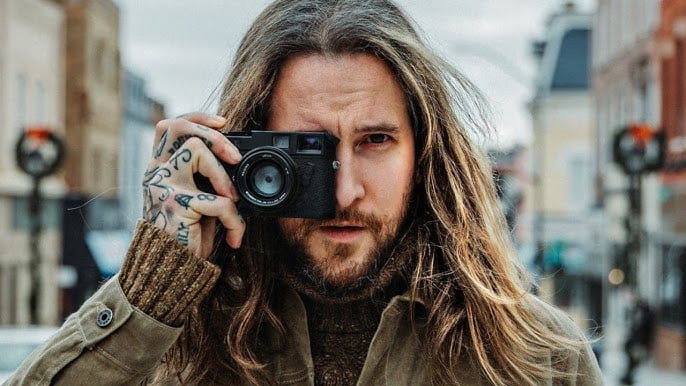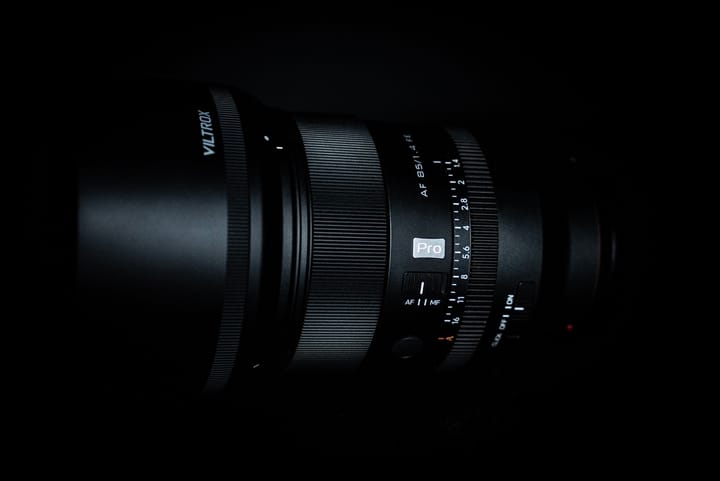In the fast-paced world of digital photography, where technology constantly pushes the boundaries of what's possible, something unexpected has been happening: film photography is making a powerful comeback. What began as a nostalgic hobby for a few enthusiasts is now gaining momentum, and by 2025, the resurgence of film—or analog photography—is expected to take off like it did in its golden era. This revival is not just about reliving the past; it's about reclaiming the authenticity and artistry that many feel has been lost in the wake of digital domination and the growing influence of AI on the photographic world.
The Shift Toward Film: An Analog Revolution
Film photography, once thought to be obsolete, is now being embraced by photographers of all levels, from seasoned professionals to aspiring hobbyists. The tactile experience of loading a film camera, the sound of the shutter, and the anticipation of waiting for the developed images to return—these are the joys that digital can’t replicate. In an age where AI can generate images at the touch of a button, many photographers are turning back to film to reconnect with the fundamentals of the craft.
There's a growing sentiment that AI is making photography feel artificial and disconnected from the artistry it once embodied. With the rise of apps that can turn selfies into model-like images and fake AI models flooding social media, many photographers feel frustrated, disillusioned, and even threatened by this technological intrusion. What was once a creative process is now, for some, a race to outdo algorithms and machine-generated images. This is where film photography is providing a much-needed escape and a return to what photography is truly about—art, skill, and personal expression.
Film Photography as the Answer to AI Fatigue
Film photography offers something that digital and AI-generated images cannot: a real, tangible connection to the art. There's no instant gratification with film; it requires patience, understanding, and, above all, skill. The result is not just a photograph but a work of art that has been carefully crafted from the moment the camera's shutter clicks to the time the film is developed.
This slower, more intentional process is proving to be a balm for photographers weary of the digital world's shortcuts and automation. AI may be able to replicate many things, but it can't replicate the feel of film in your hands, the satisfying click of the shutter, or the excitement of seeing your images for the first time after they've been developed.
Five Photographers Leading the Film Revival
As film photography gains popularity, several influential photographers are championing its revival. These artists have returned to their analog roots, embracing the medium as a form of rebellion against the oversaturation of digital and AI imagery. Let's take a look at five notable photographers who have reignited their passion for film photography.
1. Peter McKinnon – A Year-Long Project with Film

Peter McKinnon, a prominent figure in the digital photography and videography world, surprised his audience by embarking on a year-long project dedicated entirely to film photography. Known for his engaging YouTube tutorials and deep dives into the latest camera gear, McKinnon decided to go back to basics, exploring the art of analog photography in an attempt to reconnect with the tactile, intentional side of image-making. His project showcases not only the beauty of film but also the joy and creativity that come from stripping away the convenience of digital.
McKinnon's decision to document his journey with film resonated deeply with his followers. Throughout the year, he shared the ups and downs of shooting with film—missed shots, unexpected surprises in development, and the sheer thrill of nailing a perfect exposure. His project became a love letter to the craft, proving that even in a digital age, film has a special place in the hearts of photographers.
- Yuliya Panchenko – Boudoir with Film ( Forbidden Frames)

Yuliya Panchenko, an internationally renowned boudoir and nude photographer, has undertaken a three-year film photography project called "Forbidden Frames." This ambitious project involves documenting 100 boudoir photo sessions with 100 analog cameras, all dating from 1900 to 2000. Panchenko's mastery of lighting and posing translates beautifully into the analog medium, adding a timeless, artistic touch to her boudoir images.
For Panchenko, film photography is not just a creative challenge but a statement. In a time when AI and digital manipulation can distort reality, her return to film represents a stand for authenticity and artistry. She views the analog process as a way to capture the raw beauty of her subjects without the interference of post-production tricks. Her project has inspired many other boudoir photographers to explore the analog world, demonstrating that film can elevate the genre to new heights.
3. Joe Greer – Street Photography on Film

Joe Greer, a street photographer with a massive following on social media, is another photographer who has embraced film. Known for his candid shots of life in New York City, Greer found that film allowed him to capture the true essence of the streets. The slower, more deliberate process of shooting with film gave him time to observe his surroundings more thoughtfully, resulting in images that felt more organic and genuine.
For Greer, the return to film wasn’t just about nostalgia; it was about creating images with soul. His work is a reminder that film photography is not just a technical process but an emotional and artistic one. By using film, Greer reconnects with the roots of street photography, where every frame counts, and there's no instant delete button.
- Jonathan Canlas – The FIND Lab and the Film Is Not Dead Movement

Jonathan Canlas has been a vocal advocate for the return to film since he founded the "Film Is Not Dead" (FIND) movement. Through his FIND Lab, Canlas provides photographers with the tools and knowledge to shoot, develop, and print film. His workshops have inspired countless photographers to pick up film cameras and embrace the analog process.
Canlas believes that film photography is more than just a trend—it's a way of life. His mission is to keep film alive in an industry increasingly dominated by digital. Through his workshops and educational resources, Canlas encourages photographers to slow down, think about their shots, and enjoy the process rather than rushing to the finish line.
5. Andre Josselin – Cinematic Storytelling Through Film

Andre Josselin is a celebrated photographer and social media influencer known for his striking cinematic portraits, many of which are shot on film. His film photography evokes a sense of nostalgia and timelessness, blending vibrant emotions with the beauty of everyday moments. Josselin’s work captures the essence of his subjects in a way that feels intimate, authentic, and cinematic, making him a favorite in both the commercial and art photography worlds.
Josselin’s return to film stems from his love of the medium’s organic feel and its ability to create mood and texture that digital simply can’t replicate. For Josselin, film photography forces a thoughtful approach, where each shot matters, and that intentionality brings out deeper emotions in his work. He’s been an advocate for the resurgence of film, often sharing his analog process with his large social media following and inspiring many to embrace the medium themselves. Andre Josselin’s cinematic style has resonated across platforms, solidifying his influence as one of the key figures pushing the analog photography movement into the spotlight once again.
Why Film Photography Will Take Off in 2025
Film photography is more than just a trend; it's a reaction to the overabundance of digital and AI-generated images that have flooded the industry in recent years. Many photographers are disillusioned with the digital world, where the line between real and fake is increasingly blurred. AI, in particular, has been a driving force behind this disillusionment. While AI can create stunning visuals, it often feels impersonal and detached from the human experience. Film, on the other hand, offers something real, something tangible, and something undeniably human.
As photographers tire of the shortcuts that digital and AI offer, more and more are returning to the slower, more deliberate process of film. This shift is already happening, but by 2025, it is expected to take off in a big way. Younger generations, many of whom have never shot with film, are discovering its magic for the first time, while seasoned professionals are rediscovering the joy of analog photography.
The Fun and Enjoyment of Film
One of the most appealing aspects of film photography is the fun and enjoyment that comes with the process. From selecting the perfect film stock to developing your own images, every step feels like a personal journey. Unlike digital, where you can take hundreds of shots without thinking twice, film forces you to slow down and be intentional with every frame.
The satisfaction of holding a physical print in your hands, knowing that you created it from start to finish, is something that digital photography can never match. This hands-on, creative process is why many photographers are choosing to go back to film—because it's not just about the final image, but the experience of getting there.
Conclusion: A Future Rooted in the Past
The return of film photography is more than a trend; it’s a movement. As the digital world becomes more automated and AI-driven, many photographers are looking for something real, something genuine, something that connects them to the essence of the craft. Film photography offers that connection, and by 2025, it will likely take off in ways we haven’t seen since its heyday.
From Peter McKinnon’s year-long film project to Yuliya Panchenko’s three-year boudoir series, photographers across the globe are leading the charge in this analog revival. Film photography reminds us of why we fell in love with the craft in the first place—it’s not about the quantity of images or the convenience of technology, but the artistry, the patience, and the joy of creating something truly special. So dust off your old film camera, because the future of photography may very well be found in its past.



